We had arrived in camp in the pitch dark last night so it was a pleasant surprise this morning when we awoke to find that we were camped right on the banks of the Danube, only a few minutes out of Melk. It was pretty chilly out, with a strong wind blowing but we bundled up and rode our bikes in along the dedicated cycling path alongside the river into Melk. We locked up our bikes just at the base of the enormous, fortified Melk abbey, which is perched atop a cliff. We wandered through the tiny town and up towards the St. Benedictine abbey. It was established during the 11th century, later destroyed by a fire and what is present today is from the 18th century, Baroque style. The abbey is truly magnificent and one of the most spectacular buildings we've seen to date.
The abbey is an entire complex, dominated by a chapel with a 200 ft domed ceiling, impressive library and extensive gardens. It is an active abbey, with monks still residing and preaching the teachings of St. Benedict. They also run a regular school there with 800 students and even a full sized gymnasium. The most recent restoration of the abbey was completed in 1996, to commemorate the 1000th year anniversary of the first reference to a country named Österreich (Austria). As I did, you may ask, how does a monastery fund a 22 million Euro restoration project? Well, partly thanks to visitors like us, partly from private donations, and partly from the sale of the abbey’s sale of their Gütenburg bible to Yale. As I mentioned to Megs, these monks know a thing or two about fundraising!
It took us a couple hours to explore the abbey and the grounds outside. You enter the abbey through two sets of impressive courtyards, with their orange and white baroque façades, and you are immediately aware that this is going to be a grand sight. The courtyard is marked with statues of Peter and Paul and the monastery’s coat of arms, crossed keys. Your eye is drawn to the towering dome of the chapel in the background, which is the focus of the abbey. Most of the monks who are dedicated to the abbey, actually preach Christianity from outside its walls. Once we reached the first floor of the abbey, it marked the actual start of our self-guided visit.
The tour begins with a series of rooms exhibiting some of the abbey’s treasures – old garments, books, jewels. The rooms were painted in these really bright greens and blues and had bizarre light and sound effects. We were not entirely sure what they were hoping to achieve by that other than to throw people off. I particularly liked the re-usable coffin which was a very practical consideration and eco-friendly, although this was only a secondary motivation. The main reason for the use of re-usable coffins was an edict by Josef II who deemed it necessary because he believed the wood prevented the body from decaying properly. The last room ended with a few videos about the abbey, its restoration and some associated facts and a large scale model of the abbey on a rotating platform – this was one well-off abbey. Here are some facts we found interesting about the construction of the abbey:
- It has 1536 windows
· The abbey was so large that it owned several kilns to produce the 9 million bricks used in its construction
· The most recent restoration cost a whopping 22 million Euros!
From that room, we walked into the "marble hall" which is actually made of stucco marble (i.e. painted to give the effect of marble) and whose only marble are the doors themselves. The highlight here was the ceiling fresco which is elaborately painted to give the illusion that the room has a domed roof and is larger than it really is (in reality, the roof is flat but the optical illusion is very well executed).
In the center of the room, in the floor, is this elaborate iron grill – it didn’t really explain why it was there though so one can only guess. Despite its grandeur today, the abbey has experienced some tough times such as when Napoleon occupied it twice and when Hitler annexed Austria and the monks were relegated to only a small corner of the abbey. Yet despite all this, they have endured and seem to be flourishing.
We exited the marble hall onto the balcony which offers splendid views of the Danube valley, the town of Melk below and the church façade. Proceeding from there, we entered the most interesting part of the abbey in my opinion, the library. St. Benedict teachings center around three main principles: praying, learning and working (in order of importance). Therefore, the library is of utmost importance to the abbey and accorded a corresponding grandeur.
It has 16,000 volumes, centered around faith, some dating from several hundred years ago. I’m guessing that this where the Gütenberg bible would have resided before moving into Yale’s possession. This room also contains two large wooden globes, hand made by a famous Venetian map maker in the 1700s. The globes are about 1.1 in diameter and show California as a separate island reflecting the understanding of the New World at the time of creation. We didn’t see anyone using the library at the time but I imagine it is still used, perhaps when all the tourists are gone.
From the library, we descended on a really neat spiral staircase and entered one of the most ornate churches we’ve seen to date, only surpassed by the Asam brother’s church in Munich. It has countless cherubs, gold-guilded carvings and probably every other Baroque element in the book. And of course, an impressive organ at the rear of the church. Once we were done looking around the church, we headed out into the grounds of the abbey to wander through their various themed gardens: formal garden, deciduous, herb and vegetable garden among others. Even though it was pretty cold outside, we had a fun time wandering around, taking in views of the abbey from various angles and just enjoying the natural beauty of the gardens themselves.
Once we were done in the gardens, we headed back towards our bikes to ride back to camp. It was a national holiday today so most shops were closed but we just happened to walk by a café/bakery that was open. I had just said a few minutes prior that I could easily go a day or two without patisseries but I had to eat my words as I was drawn into the bakery and was forced, by my lack of will power, to buy treats for dessert. Megs was concerned that we wouldn’t be able to carry it back to camp intact but I told her to leave me to worry about those details and just choose her dessert – she went for the apfel strudel. I picked up a regional specialty, called “Melker torte”, which was a moist chocolate cake, with apricot marmalade layered in between, finished with a semi-hard, chocolate icing on top. The Wachau apricots, which are from around the Danube valley, are highly prized. I’m not sure if I would be able to tell the difference between one of them and an Okanagan apricot in a blind taste test. Nonetheless, the Melker torte definitely got a “mouth-watering” rating.
The next day we set off for a scenic drive through the Wachau valley. Unfortunately it was pouring down rain so we couldn’t do any of the hillside walks that would have given us nice views over the vineyards. Instead we took pictures from the van on the side of the road and Anoop made a few dashes out for brief photo ops. The colours of the vineyards and all the trees were just beautiful. We stopped off in one small town and luckily the rain had let up a bit.
We headed in to find a bakery which was recommended for its Wachau rolls. We picked up two along with some apricot strudel. We ate the buns with lunch and wished we had picked up more! We then continued on our way and stopped in another small town which had a recommended church and a few shops for local specialties. However, the churches were all closed so we wandered the pedestrian zone instead. There was a neat ceramic market going on and we enjoyed checking out all the booths. From there we continued on to Vienna and arrived in camp early enough to enjoy a cup of tea and strudel.
Melk Abbey
Saturday, October 27, 2012
 Melk, Lower Austria, Austria
Melk, Lower Austria, Austria
Other Entries
-
42Venice
Sep 2532 days prior Venice, Italyphoto_camera96videocam 0comment 6
Venice, Italyphoto_camera96videocam 0comment 6 -
43Forni di Sopra, a quick visit
Sep 2631 days prior Forni di Sopra, Italyphoto_camera16videocam 0comment 0
Forni di Sopra, Italyphoto_camera16videocam 0comment 0 -
44Davos
Sep 3027 days prior Davos, Switzerlandphoto_camera46videocam 1comment 1
Davos, Switzerlandphoto_camera46videocam 1comment 1 -
45Schilthorn and North face walk
Oct 0225 days prior Lauterbrunnen, Switzerlandphoto_camera56videocam 3comment 5
Lauterbrunnen, Switzerlandphoto_camera56videocam 3comment 5 -
46To the "Top of Europe"
Oct 0324 days prior Lauterbrunnen, Switzerlandphoto_camera76videocam 5comment 7
Lauterbrunnen, Switzerlandphoto_camera76videocam 5comment 7 -
47The Rothorn and Schynige Platte
Oct 0522 days prior Lauterbrunnen, Switzerlandphoto_camera73videocam 0comment 2
Lauterbrunnen, Switzerlandphoto_camera73videocam 0comment 2 -
48Mannlichen and First
Oct 0621 days prior Lauterbrunnen, Switzerlandphoto_camera39videocam 0comment 1
Lauterbrunnen, Switzerlandphoto_camera39videocam 0comment 1 -
49Castles in Bavaria
Oct 0819 days prior Füssen, Germanyphoto_camera47videocam 1comment 2
Füssen, Germanyphoto_camera47videocam 1comment 2 -
50Linderhof Palace & Rococo churches
Oct 1017 days prior Linderhof, Germanyphoto_camera39videocam 0comment 4
Linderhof, Germanyphoto_camera39videocam 0comment 4 -
51Munich
Oct 1215 days prior Munich, Germanyphoto_camera157videocam 0comment 5
Munich, Germanyphoto_camera157videocam 0comment 5 -
52Herrenchiemsee palace
Oct 1314 days prior Herrnchiemsee, Germanyphoto_camera9videocam 0comment 1
Herrnchiemsee, Germanyphoto_camera9videocam 0comment 1 -
53Innsbruck
Oct 1413 days prior Innsbruck, Austriaphoto_camera85videocam 0comment 7
Innsbruck, Austriaphoto_camera85videocam 0comment 7 -
54Return to Forni di Sopra
Oct 216 days prior Forni di Sopra, Italyphoto_camera24videocam 0comment 5
Forni di Sopra, Italyphoto_camera24videocam 0comment 5 -
55Berchtesgaden
Oct 234 days prior Berchtesgaden, Germanyphoto_camera18videocam 0comment 1
Berchtesgaden, Germanyphoto_camera18videocam 0comment 1 -
56Salzburg
Oct 243 days prior Salzburg, Austriaphoto_camera48videocam 0comment 0
Salzburg, Austriaphoto_camera48videocam 0comment 0 -
57Hallstatt
Oct 252 days prior Hallstatt, Austriaphoto_camera37videocam 0comment 3
Hallstatt, Austriaphoto_camera37videocam 0comment 3 -
58Mauthausen Concentration Camp
Oct 261 day prior Mauthausen, Austriaphoto_camera22videocam 0comment 1
Mauthausen, Austriaphoto_camera22videocam 0comment 1 -
59Melk Abbey
Oct 27 Melk, Austriaphoto_camera66videocam 0comment 1
Melk, Austriaphoto_camera66videocam 0comment 1 -
60Vienna
Oct 314 days later Vienna, Austriaphoto_camera133videocam 0comment 1
Vienna, Austriaphoto_camera133videocam 0comment 1 -
61Telc & Trebon
Nov 026 days later Telc, Czech Republicphoto_camera23videocam 0comment 1
Telc, Czech Republicphoto_camera23videocam 0comment 1 -
62Cesky Krumlov
Nov 037 days later Cesky Krumlov, Czech Republicphoto_camera25videocam 0comment 1
Cesky Krumlov, Czech Republicphoto_camera25videocam 0comment 1 -
63Prague
Nov 0610 days later Prague, Czech Republicphoto_camera83videocam 2comment 4
Prague, Czech Republicphoto_camera83videocam 2comment 4 -
64Kutna Hora and Terezin Ghetto
Nov 0711 days later Terezin, Czech Republicphoto_camera33videocam 0comment 3
Terezin, Czech Republicphoto_camera33videocam 0comment 3 -
65Christmas Town of Seiffen
Nov 0913 days later Seiffen, Germanyphoto_camera49videocam 0comment 5
Seiffen, Germanyphoto_camera49videocam 0comment 5 -
66Nazi Party Rally Grounds in Nuremberg
Nov 1115 days later Nuremberg, Germanyphoto_camera21videocam 0comment 1
Nuremberg, Germanyphoto_camera21videocam 0comment 1 -
67Rothenburg
Nov 1216 days later Rothenburg ob der Tauber, Germanyphoto_camera50videocam 0comment 1
Rothenburg ob der Tauber, Germanyphoto_camera50videocam 0comment 1 -
68Planes, Trains and Automobiles
Nov 1418 days later Mulhouse, Francephoto_camera34videocam 0comment 6
Mulhouse, Francephoto_camera34videocam 0comment 6 -
69Beaune
Nov 1519 days later Beaune, Francephoto_camera60videocam 0comment 7
Beaune, Francephoto_camera60videocam 0comment 7 -
70Royan
Nov 1923 days later Royan, Francephoto_camera9videocam 0comment 4
Royan, Francephoto_camera9videocam 0comment 4 -
71A second visit to London
Nov 2529 days later London, United Kingdomphoto_camera93videocam 0comment 15
London, United Kingdomphoto_camera93videocam 0comment 15 -
72En route to Bangalore
Nov 2630 days later Dubai, United Arab Emiratesphoto_camera10videocam 0comment 3
Dubai, United Arab Emiratesphoto_camera10videocam 0comment 3 -
73Bangalore
Dec 1650 days later Bangalore, Indiaphoto_camera134videocam 0comment 17
Bangalore, Indiaphoto_camera134videocam 0comment 17 -
74London, our third and final visit?
Dec 1953 days later London, United Kingdomphoto_camera32videocam 1comment 2
London, United Kingdomphoto_camera32videocam 1comment 2 -
75Visiting friends in Scotland
Jan 0469 days later Beith, United Kingdomphoto_camera68videocam 0comment 4
Beith, United Kingdomphoto_camera68videocam 0comment 4 -
76Preparing for new adventures
Jan 0873 days later Royan, Francephoto_camera3videocam 0comment 0
Royan, Francephoto_camera3videocam 0comment 0 -
77Citadel in Blaye & Dune de Pilat
Jan 1075 days later Blaye, Francephoto_camera13videocam 0comment 0
Blaye, Francephoto_camera13videocam 0comment 0

 Melk, Lower Austria, Austria
Melk, Lower Austria, Austria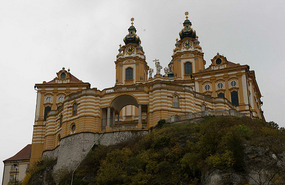
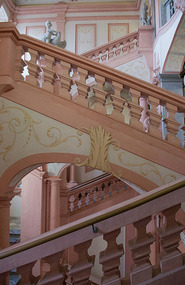
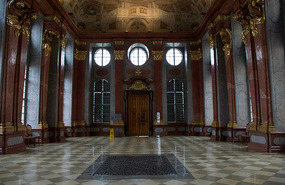

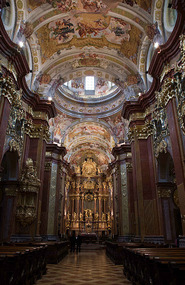
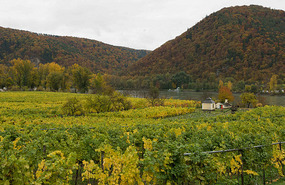





































































2025-05-22